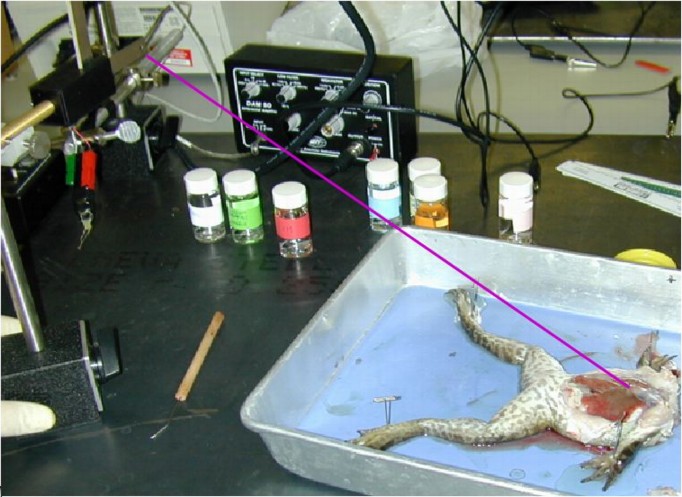To top it all off, med students are burdened with volatile subjects like Biochemistry and pharmacology. Doing biochemical tests on urine samples is disgusting as it is, but what really puts the drain on the mental faculty are all those biological cycles of all the metabolic fates of carbohydrates, proteins and fats in the human body. Its one helluva job memorizing them and another recalling them in the examination hall. Besides you forget them all after the Professional examinations.
Somehow the years roll over. While first and second year seem to take ages and the end never seems in sight ( o why have I landed myself in this mess?) , third and fourth years seem like a whirl wind (which is so ironic because you really start getting the hang of things). Either the studies get easier or you have grown immune to the stresses and strains by now, but somehow life becomes more tolerable. And after two years of beating about the bush and studying what they call the ‘normal’ we come face to face with the diseases themselves- the ‘pathology’, our real enemies. This is the domain all doctors strive to conquer- the real basis of medicine. The medical student uses the eyepiece of the microscope to stalk down this enemy.
Courtesy:/dehradunlive.in/search/wp-content/uploads/2013/07/Goyal-Pathology-Lab-Dehradun
But this is no combat situation. We just view these dead, diseased tissues which have been stained with Haematoxylin and Eosin- the ‘pink’ and ‘blue’ one sees under the microscope, that adds color to these dead and dull-looking tissues and makes slide viewing a tolerable experience.

Courtesy: http://amida13.isi.uu.nl/
The real battle is fought in the wards. So clinical rotations are an important part of this training programme.
Although there is nothing really glamorous about going around hospital wards taking case histories and doing ‘general physical examinations’ (GPE), but moving around with seniors on ward rounds is exciting. You get your share of flattering remarks and disapproving looks from Professors and patients alike.But amongst the many faces of life in a hospital a familiar one is
the face of helplessness. It screams at you as you go past the waiting
area, or go down those dimly lit corridors. Rows and rows of patients,
grieving , in pain, helpless- and in contrast to all those dead bodies
in the dissection hall-alive.
And it seems almost as if someone has strapped a heavy load onto one’s shoulders. The sense of responsibility weighs one down. By becoming part of a few moments in the lives of these patients, doctor and patient are bound in a sacred trust that transcends all barriers of cast, creed and social status and one becomes accoutable to one’s own conscience.
Regardless of all the degrees, medals and years of experience, a new patient is always a new challenge to a doctor. All tall claims finally boil down to the basic relationship that a doctor has with his patient. an impression left by any doctor in the mind of his patient reflects upon the whole profession. Once let down, he will never trust his life with any doctor. The jinx of the doctor being a ‘Messiah’ shall be broken forever. Because there is no room for errors in the medical profession, and to the common man ‘people in white coats’ are all the same.
Somehow the years roll over. While first and second year seem to take ages and the end never seems in sight ( o why have I landed myself in this mess?) , third and fourth years seem like a whirl wind (which is so ironic because you really start getting the hang of things). Either the studies get easier or you have grown immune to the stresses and strains by now, but somehow life becomes more tolerable. And after two years of beating about the bush and studying what they call the ‘normal’ we come face to face with the diseases themselves- the ‘pathology’, our real enemies. This is the domain all doctors strive to conquer- the real basis of medicine. The medical student uses the eyepiece of the microscope to stalk down this enemy.
Courtesy:/dehradunlive.in/search/wp-content/uploads/2013/07/Goyal-Pathology-Lab-Dehradun
But this is no combat situation. We just view these dead, diseased tissues which have been stained with Haematoxylin and Eosin- the ‘pink’ and ‘blue’ one sees under the microscope, that adds color to these dead and dull-looking tissues and makes slide viewing a tolerable experience.

Courtesy: http://amida13.isi.uu.nl/
The real battle is fought in the wards. So clinical rotations are an important part of this training programme.
And it seems almost as if someone has strapped a heavy load onto one’s shoulders. The sense of responsibility weighs one down. By becoming part of a few moments in the lives of these patients, doctor and patient are bound in a sacred trust that transcends all barriers of cast, creed and social status and one becomes accoutable to one’s own conscience.
Regardless of all the degrees, medals and years of experience, a new patient is always a new challenge to a doctor. All tall claims finally boil down to the basic relationship that a doctor has with his patient. an impression left by any doctor in the mind of his patient reflects upon the whole profession. Once let down, he will never trust his life with any doctor. The jinx of the doctor being a ‘Messiah’ shall be broken forever. Because there is no room for errors in the medical profession, and to the common man ‘people in white coats’ are all the same.
View full article published in healthmad.
Visit :
http://healthmad.com/medicine/in-white-coats-2/
Please don't forget to like, share and comment on the website too.






